How much does winterization cost, boaters?
Discover the cost of boat winterization, from DIY to professional services, and learn how to save money while protecting your vessel.
Winterizing a boat is a critical task for boaters in regions where temperatures drop below freezing. Properly preparing your vessel for the off-season protects its engine, systems, and hull from damage caused by cold weather, saving you from costly repairs. But how much does it really cost to winterize a boat? Costs can vary widely based on factors like boat size, engine type, system complexity, and whether you opt for a DIY approach or professional services. This guide breaks down the costs, considerations, and strategies to winterize your boat effectively while keeping expenses in check.
Understanding Boat Winterization
Winterization involves preparing a boat for cold weather to prevent damage from freezing temperatures. Water left in engines, plumbing, or other systems can expand when frozen, causing cracks in engine blocks, pipes, or hulls. Mold, mildew, and corrosion can also harm interiors and electrical components if not addressed. Winterization typically includes draining fluids, adding antifreeze, stabilizing fuel, fogging engines, cleaning, and ensuring proper storage.
The cost of winterization depends on whether you do it yourself or hire a professional, the size and type of your boat, and additional factors like storage and transportation. Below, we explore these costs in detail and provide insights from boaters’ experiences to help you make informed decisions.
DIY Winterization: Costs and Considerations
Winterizing your boat yourself can save significant money, especially if you have basic mechanical skills and the time to invest. The primary expenses for DIY winterization are materials, which vary based on your boat’s size and systems.
DIY Winterization Costs
| Item | Estimated Cost |
|---|---|
| Antifreeze (concentrate) | $10–$20 |
| Fuel Stabilizer | $10–$15 |
| Fogging Oil | $10–$15 |
| Motor Oil | $15–$30 |
| Oil Filter | $10–$20 |
| Corrosion Protection Spray | $5–$10 |
| Drain Plugs | $5–$10 |
| Lower-Unit Lube | $10–$15 |
| Oil Suction Pump | $20–$40 (reusable) |
| Replacement Filters | $10–$50 |
| Total | $105–$185 |
For smaller boats with outboard engines, DIY costs typically range from $100 to $150. Larger boats with inboard engines or complex systems (e.g., water tanks, live wells, or heads) may push costs closer to $200 due to additional materials.
Pros and Cons of DIY Winterization
Pros:
- Cost Savings: DIY winterization is significantly cheaper, often costing less than half of professional services.
- Learning Opportunity: You gain valuable knowledge about your boat’s systems, which can help with future maintenance.
- Flexibility: You can work on your schedule without coordinating with a marina or mechanic.
Cons:
- Time and Effort: Winterizing can take 1–3 hours, especially for beginners, and requires careful attention to detail.
- Skill Level: Mistakes due to inexperience can lead to costly damage, such as cracked engine blocks.
- Restrictions: Some marinas or storage facilities prohibit owners from performing maintenance on-site, limiting DIY options.
Tips for Successful DIY Winterization
- Consult Your Manual: Follow your boat’s specific winterization guidelines to avoid missing critical steps.
- Use Quality Materials: Opt for marine-grade antifreeze and fogging oil, but consider RV antifreeze for cost savings, as it’s equally effective.
- Take Your Time: Rushing can lead to errors, especially when draining fluids or fogging engines.
- Watch Tutorials: Online videos can guide you through the process, especially for complex tasks like fogging inboard engines.
Professional Winterization: Costs and Benefits
Hiring a professional to winterize your boat ensures the job is done correctly, offering peace of mind but at a higher cost. Professional services vary based on the boat’s size, engine type, and the extent of winterization required.
Professional Winterization Costs
| Service Type | Boat Size/Type | Estimated Cost |
|---|---|---|
| Basic Engine Winterization | Small boats (outboard) | $150–$300 |
| Basic Engine Winterization | Medium boats (inboard) | $300–$500 |
| Full-Service Winterization | Small to medium boats | $500–$800 |
| Full-Service Winterization | Large boats (complex systems) | $800–$2,000 |
| Storage (per month) | Indoor | $100–$400 |
| Storage (per month) | Outdoor | $50–$200 |
| Storage (per month) | In-water | $50–$300 |
| Transportation | Varies by distance | $50–$200 |
- Basic Engine Winterization ($150–$500): Includes draining the engine, adding antifreeze, fogging, and stabilizing fuel. Costs are lower for outboard engines and higher for inboard or stern-drive engines.
- Full-Service Winterization ($500–$2,000): Covers engine, water systems, live wells, heads, galleys, and cleaning. Larger boats with more systems incur higher costs.
- Storage Costs ($50–$400/month): Indoor heated storage is priciest but offers the best protection. Outdoor or in-water storage is cheaper but may require additional winterization steps.
- Transportation ($50–$200): Moving your boat to a storage facility or marina adds to the total cost.
Pros and Cons of Professional Winterization
Pros:
- Expertise: Professionals are trained to handle complex systems, reducing the risk of errors.
- Guarantees: Reputable marinas or shops often provide warranties or insurance for their work.
- Convenience: Saves time and effort, especially for boaters with limited mechanical skills.
Cons:
- Higher Costs: Professional services can cost 2–5 times more than DIY, especially for larger boats.
- Variability: Prices and quality vary by provider, and some may charge premium rates for basic services.
- Scheduling: You may need to book in advance, especially during peak winterization season.
Real-World Examples from Boaters
Boaters on forums like Reddit’s r/boating have shared their experiences with winterization costs:
- A 22-foot Cobalt owner received a $1,500 quote for full-service winterization, including outdrive removal and bellows replacement, but noted that DIY could cost as little as $300–$450 with the right materials.
- In Eastern North Carolina, a marina charged $750 for a similar service, roughly half the Cobalt owner’s quote, highlighting regional price differences.
- A Michigan boater paid $2,300 for haul-out, storage, winterization, and shrink-wrapping for a 38-foot Chris Craft, suggesting larger boats incur significantly higher costs.
- A 20-foot Four Winns owner in New York’s Finger Lakes region paid $375 for winterization and summerization, with additional costs for climate-controlled storage.
These examples show that costs vary widely based on location, boat size, and service provider. Shopping around for quotes can help you find competitive rates.
Factors Affecting Winterization Costs
Several factors influence the cost of winterizing a boat:
- Boat Size: Larger boats with more systems (e.g., water tanks, heads, galleys) require more materials and labor, increasing costs.
- Engine Type: Inboard and stern-drive engines are more complex to winterize than outboards, often requiring additional steps like draining cooling systems.
- System Complexity: Boats with live wells, plumbing, or advanced electronics need extra attention, driving up costs.
- Location: Prices vary by region due to labor rates and demand. Urban areas or premium marinas often charge more.
- Service Provider: Marinas and boat shops may offer comprehensive services with guarantees, but at a higher cost than independent mechanics.
- Storage Needs: Indoor heated storage is more expensive but provides better protection than outdoor or in-water options.
Cost Breakdown by Boat Type
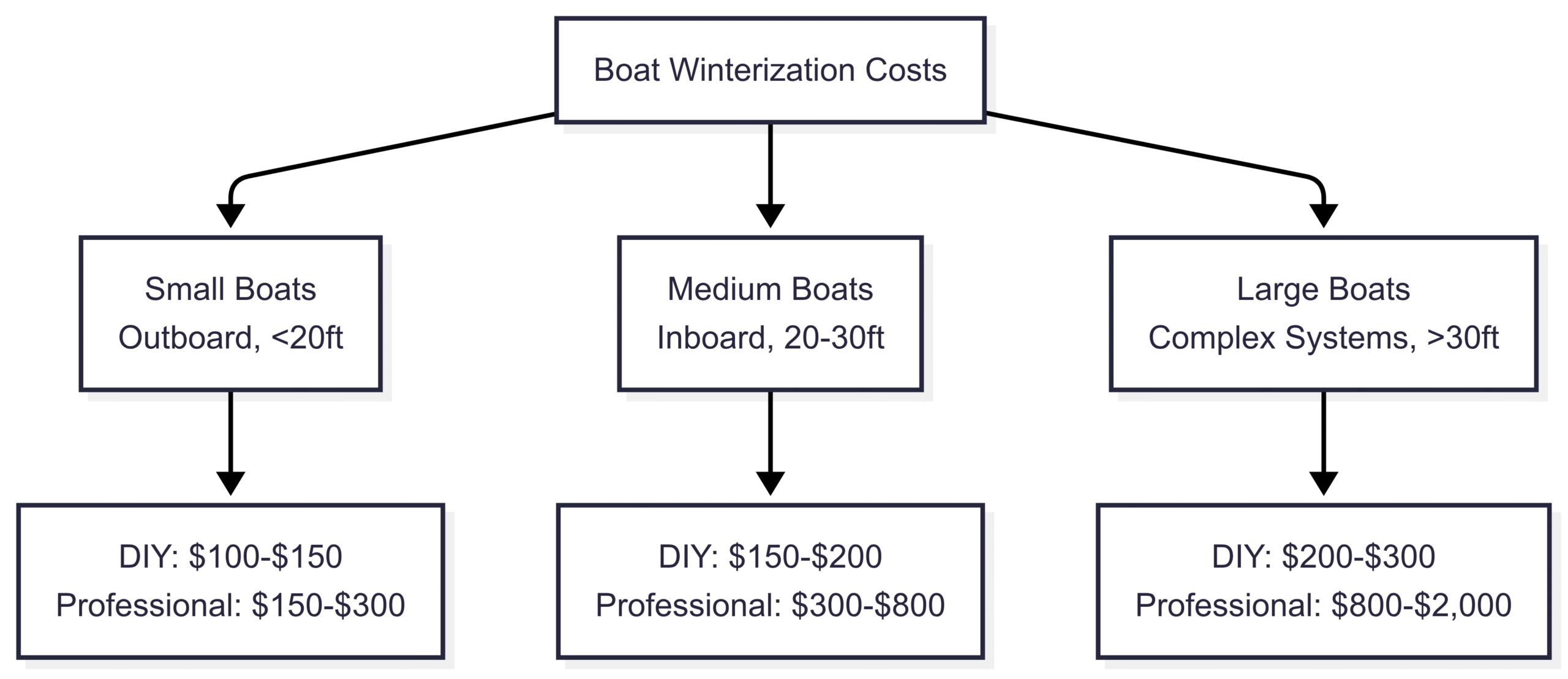
Money-Saving Tips for Winterization
- Learn Basic Maintenance: Changing your own oil or draining fluids can save $100–$200 compared to professional services.
- Invest in a Trailer: Owning a trailer (costing $1,000–$3,000) can pay for itself in 2–3 years by allowing you to winterize off-site and avoid marina restrictions.
- Use RV Antifreeze: It’s cheaper than marine-specific antifreeze but just as effective.
- Buy a Reusable Cover: A custom boat cover ($200–$500) is more cost-effective over time than annual shrink-wrapping ($10–$20 per foot).
- Store Batteries Properly: Disconnect and store batteries in a warm, dry place to avoid replacement costs ($100–$300 per battery).
- Shop Around: Get quotes from multiple marinas or mechanics to find the best rates.
Why Winterization Is Essential
Failing to winterize your boat can lead to severe damage:
- Engine Damage: Frozen water can crack engine blocks, costing $10,000+ to repair or replace.
- Plumbing Issues: Burst pipes or damaged water systems can cost $500–$2,000 to fix.
- Hull and Interior Damage: Mold, mildew, and cracked hulls can reduce resale value and require expensive repairs.
- Electrical Corrosion: Cold weather can corrode wiring, leading to $500–$1,000 in repairs.
Proper winterization preserves your boat’s condition and resale value, making it a worthwhile investment.
Conclusion
Winterizing a boat is a necessary expense for boaters in cold climates, with costs ranging from $100–$300 for DIY to $150–$2,000 for professional services, depending on boat size, engine type, and additional services like storage. By understanding the factors that influence costs and exploring DIY options or cost-saving hacks, you can protect your vessel without breaking the bank. For the most accurate estimate, contact local marinas or mechanics for quotes tailored to your boat. Whether you choose to winterize yourself or hire a professional, proper preparation ensures your boat is ready for the next season.
Happy Boating!
Share How much does winterization cost, boaters? with your friends and leave a comment below with your thoughts.
Read Mercury Marine Gauges – Best Marine Gauges in the Market? until we meet in the next article.
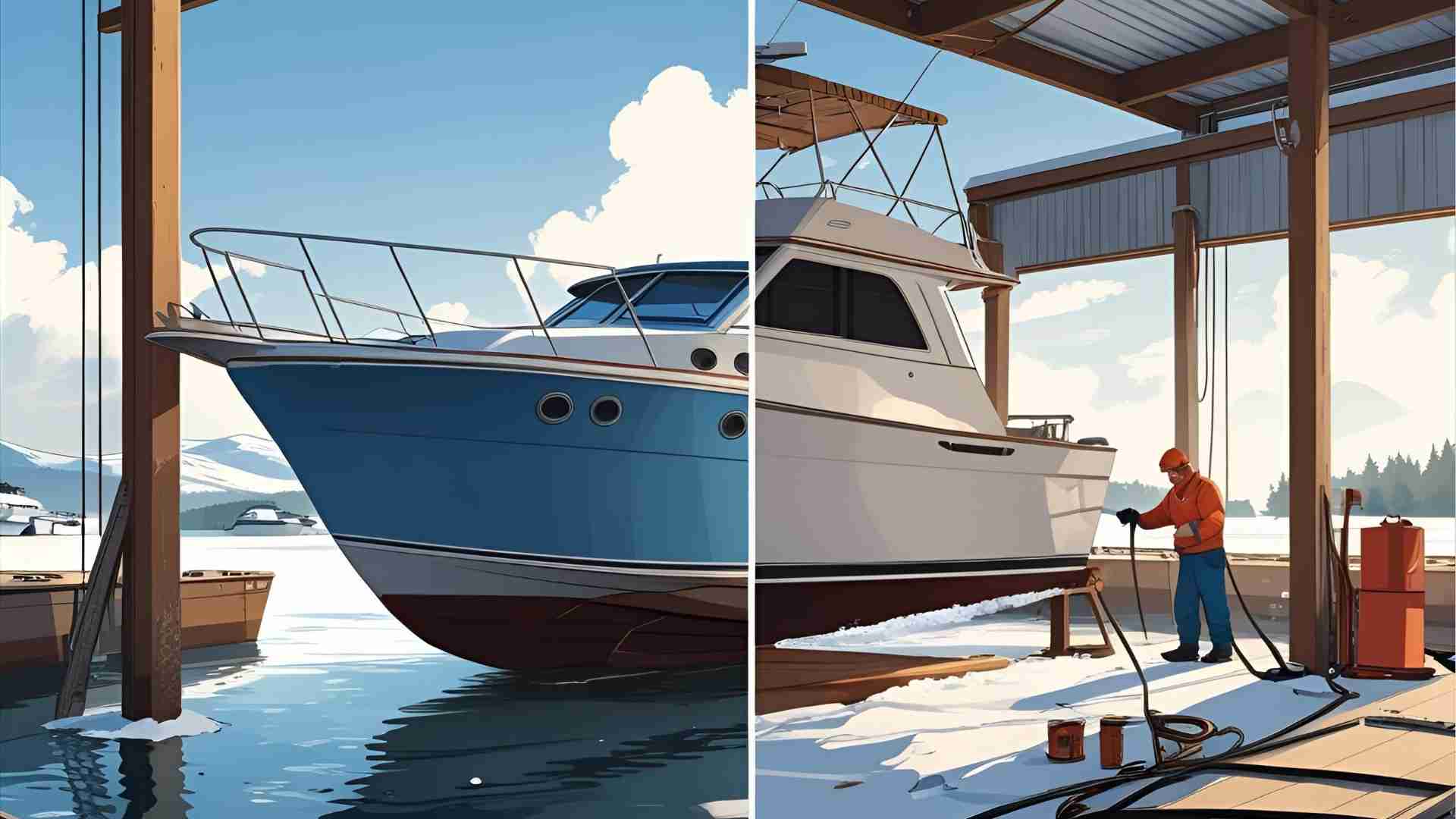
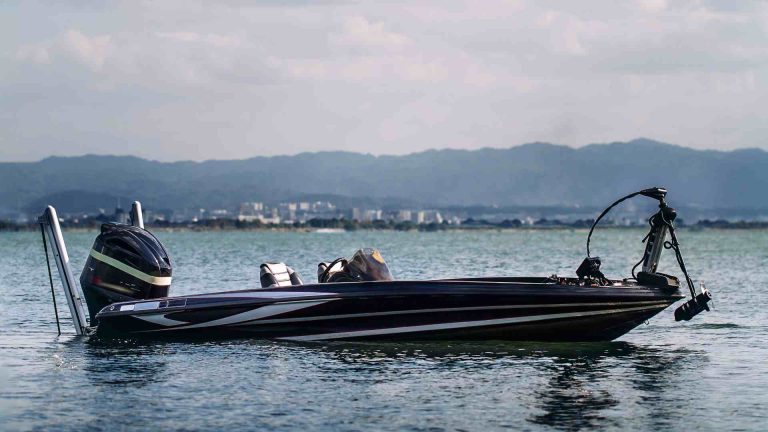
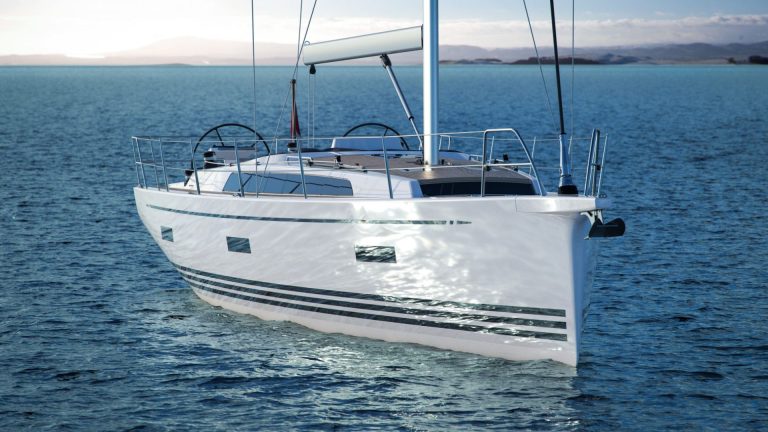



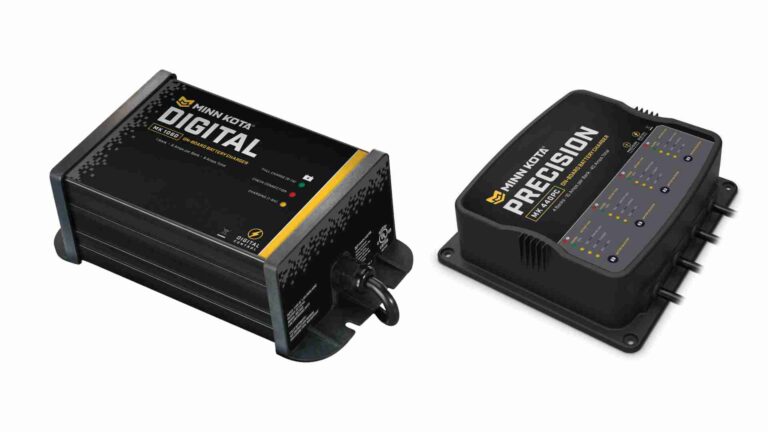
Your article helped me a lot, is there any more related content? Thanks!